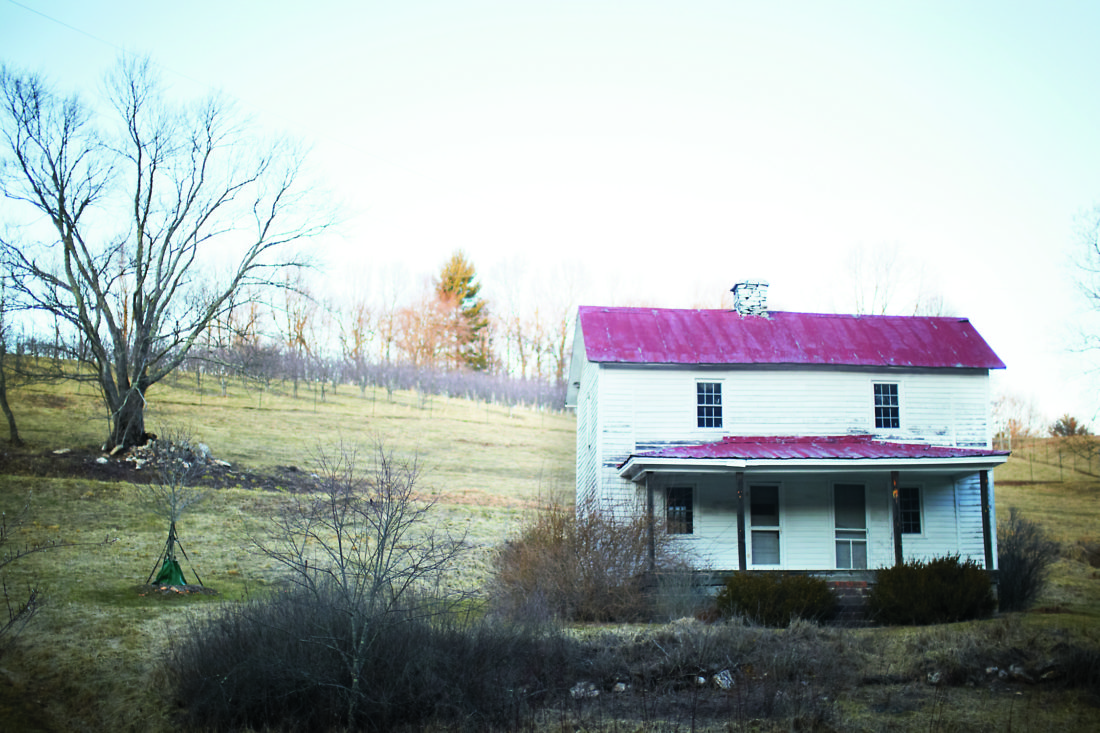Standing atop a hill and overlooking the steeply folded Blue Ridge valleys outside rural Dugspur, Virginia, hard-cider maker Diane Flynt seems ready for anything.
A friendly, energetic woman dressed in blue jeans and green Wellington boots, Flynt has just finished power-washing the bottling-room floor of her concrete-and-steel Foggy Ridge Cider plant. Taking a break, she steps into the sunshine and stares at what she’s made.
Beyond us, the hillsides are stitched in straight lines of apple trees. Each of the orchards is boxed inside tall rectangular electrified fences to deter browsing deer. Between the orchards and the fences, the hills around us look something like green quilts of fruiting trees.
“We began planting in 1996,” she says. “And we now grow more than thirty varieties of apple, many from heirloom stock. When you’re making cider, you need a palette of apple flavors to balance out the sugar, acidity, and tannins. Blending flavors is what makes good cider.”
Flynt pauses a moment, gazing across the two hundred acres she owns with her husband, Chuck. Their house is perched on a far hilltop. Beyond the house, the spine of the Blue Ridge runs slightly northeast into the distance.

Photo: Stacey Van Berkel-Haines
Diane Flynt
“Some of our really tannic apples, like the Virginia Hewe’s Crab, are virtually inedible,” she says. “We call them spitters, because when you bite into one, you’re gonna spit it out. But when you’re blending ciders, you need all sorts of flavor notes.”
Known as christr or cidre or sagardoa in different corners of Europe, hard cider, with its slightly kicky 7 to 8 percent alcohol content, fell from favor for a while, though it has always been popular in England. Recently, however, it has roared back to popularity in the United States. Light and refreshing, it’s more easygoing than beer, less powerful than a cocktail or a glass of wine. As a testament to hard cider’s increasing popularity, several times a year Flynt heads to that foodie cathedral called Murray’s Cheese in Manhattan, which hosts her for cider-and-cheese pairing clinics.
A former regional banking executive and international banking consultant, Flynt and her husband bought Foggy Ridge (a former family farm) in 1996, always intending it to house a hard-cider business.
“I’m from West Point, Georgia, out in the country,” she says. “And while I loved what I did in banking, I knew I’d eventually get back to a life in agriculture. Then we hit on making cider and started to develop a plan. As my banking career moved forward, the cider plan was moving forward, too. On vacations, I went to cider-making schools in England. I worked with cider makers in Europe. We designed our plant and tasting room. Then, finally, we were ready.”
After they licensed Foggy Ridge with state authorities in Virginia and North Carolina, the first product—ready for sale—arrived in 2006. Today, Foggy Ridge cider is sold in wine shops, gourmet stores, and restaurants, and there are roughly thirty outlets—in both licensed shops and fine-dining establishments—across the two states. “At this point, we’re keeping things sort of controlled,” Flynt says. “We want to maintain our quality, manage our growth.”

Photo: Stacey Van Berkel-Haines
Sweet Success
A fresh pour
Which doesn’t mean it’s easy. Days often start before sunrise, and there’s always some form of farm labor awaiting. Since Flynt favors a “slow and cold” approach to making cider—letting the juices of her apples ferment in chilled tanks over several months—constant monitoring is also required to keep fermentation in check. And because Foggy Ridge sits at 3,00 feet and orchard husbandry takes place in all seasons, capricious weather presents its own hurdles.
“There’s not been a year here so far,” Flynt says, “when in the spring I haven’t had apple blossoms and snowflakes on my face at the same time…I like that. Though sometimes, working outside, it’s cold up here.”
Currently, Flynt and Foggy Ridge sell three varieties of hard cider and one apple port: drinks that are similar in sweetness to Brut Champagne and Canadian iced cider. Foggy Ridge ciders have won both state and international awards. And as an extra artisinal draw, on pre-scheduled weekends Foggy Ridge’s production facility and tasting room are open to the public. During these open houses, Flynt and her staff see hundreds of visitors a day.
“It’s fun,” Flynt says. “But we still have more to do. During the American Revolution, the average American drank thirty-five gallons of cider a year.” She pauses and flashes a smile. “So my goal is to make that old statistic accurate again…and I’m happy to do that one gallon at a time.”
Photo: Stacey Van Berkel-Haines
Sunrise in the orchards
1 of 6
Photo: Stacey Van Berkel-Haines
Apples for juicing
2 of 6
Photo: Stacey Van Berkel-Haines
Apple bushels
3 of 6
Photo: Stacey Van Berkel-Haines
The fermenting tanks
4 of 6
Photo: Stacey Van Berkel-Haines
The main house
5 of 6
Photo: Stacey Van Berkel-Haines
Award-winning brews
6 of 6
For more information, visit foggyridgecider.com













